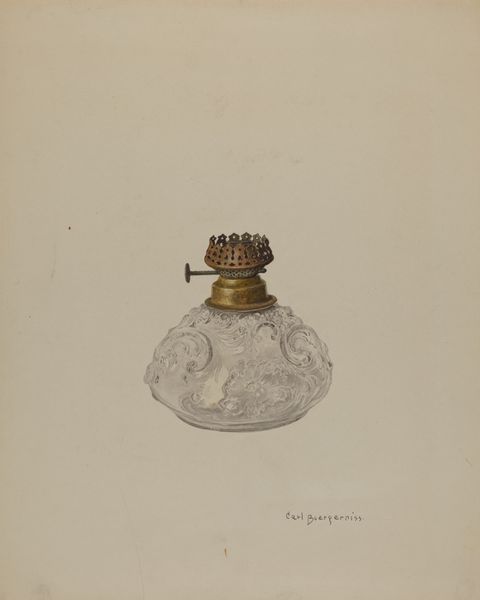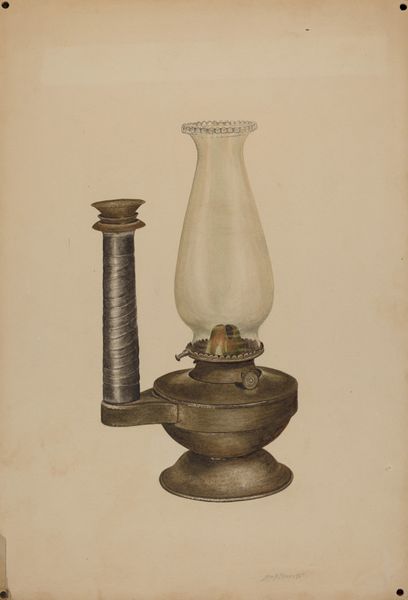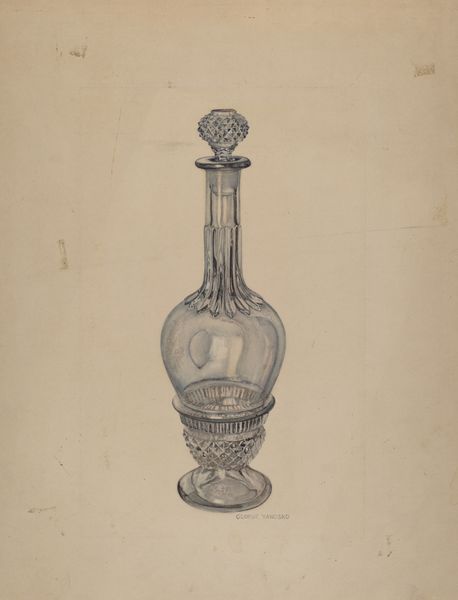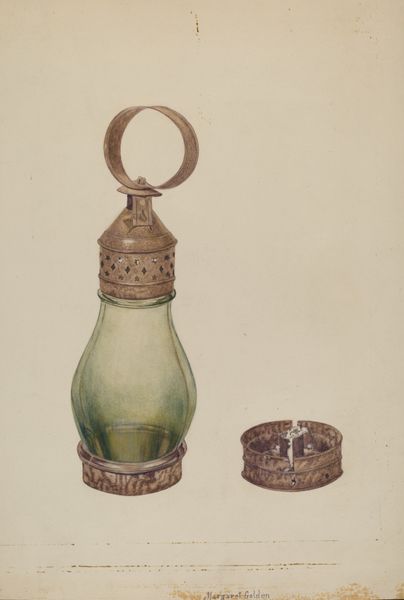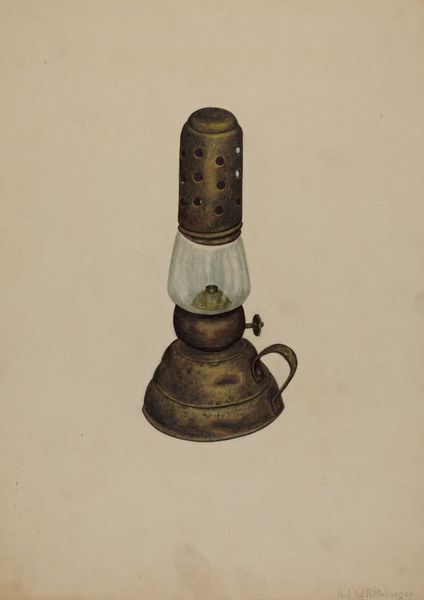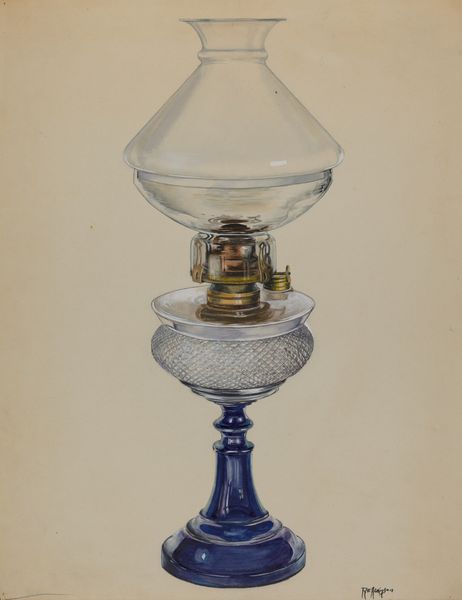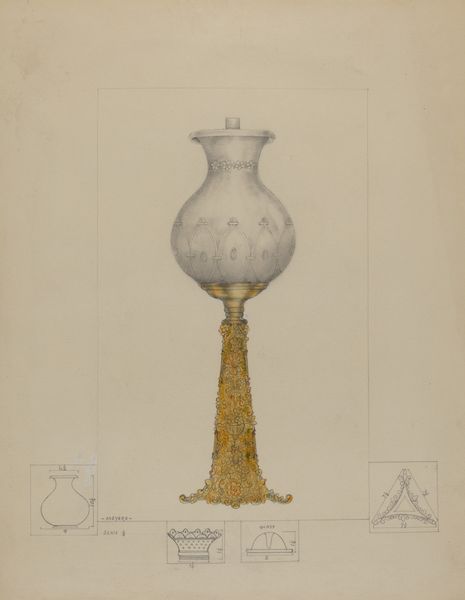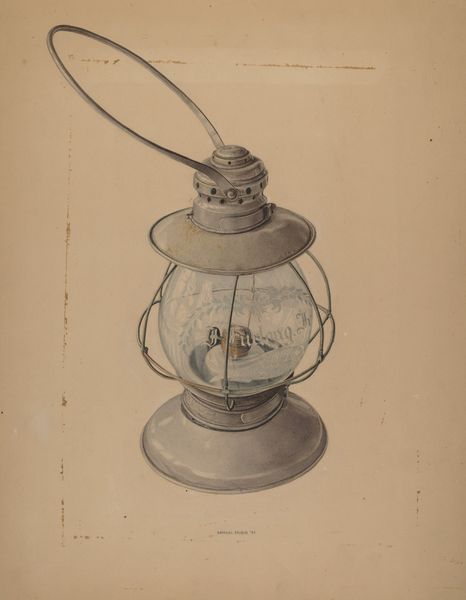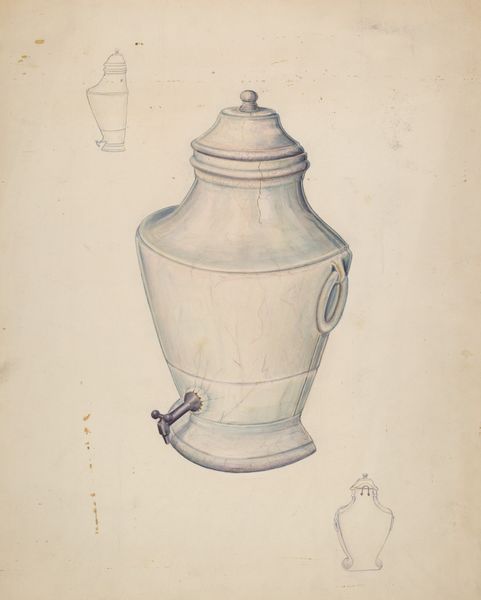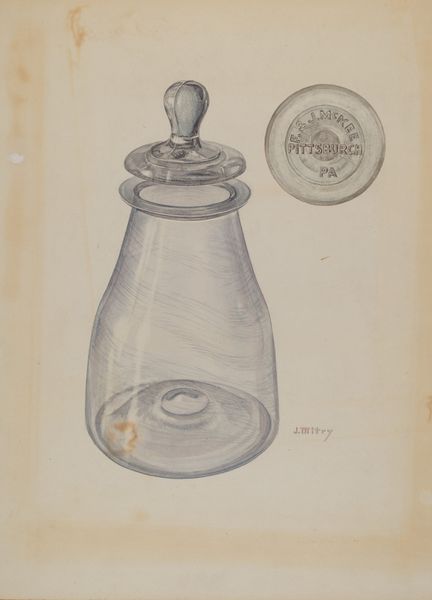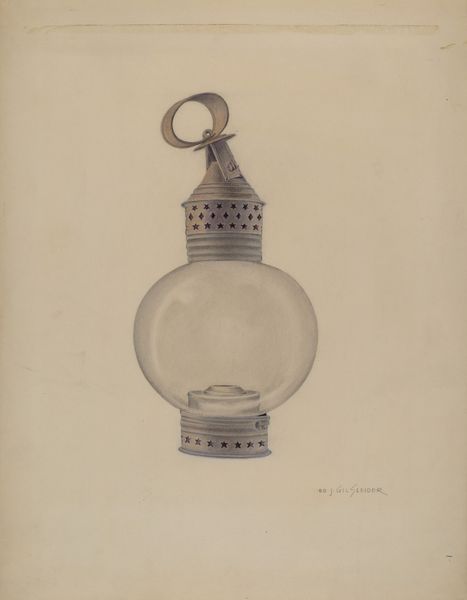
drawing
#
drawing
#
toned paper
#
water colours
#
possibly oil pastel
#
coloured pencil
#
underpainting
#
painting painterly
#
watercolour bleed
#
watercolour illustration
#
remaining negative space
#
watercolor
Dimensions: overall: 35.5 x 27.7 cm (14 x 10 7/8 in.) Original IAD Object: 15 1/2" high; 7" wide
Copyright: National Gallery of Art: CC0 1.0
Curator: Let’s consider "Blue Glass Lamp," a work made around 1937, attributed to Helen Bronson. What catches your eye first about this drawing? Editor: The colour, definitely the colour. That deep, almost velvety blue of the lamp's base is so striking against the bare paper. It gives off a certain quietness, almost melancholy. Curator: It’s interesting you say that. Bronson created this drawing during a period when the United States was still emerging from the Great Depression, a time when material resources were scarce and blue glass represented attainable beauty. The availability of materials deeply influences the forms that artists create. Editor: Exactly. You see the marks of watercolour and perhaps oil pastel combined with the tinted ground – they really emphasise the textural contrast between the solid base and the fragile glass. And notice the etched, almost imperceptible decoration on the glass—it's meticulously observed, but not laboured. I think of craft guilds, apprentices mastering intricate details… Curator: The subject itself also speaks to the socio-cultural context. Oil lamps represent the transition from traditional domestic settings to the rise of the modern electrical home and symbolize knowledge, intellect, guidance, or a nostalgic longing for pre-industrial simplicity. Editor: In the making process, you imagine the artist having such an intimate relationship with this lamp. Looking closely, sketching, layering colours to achieve that depth… How does that shape our own consumption of this artwork, and lamps generally? Curator: Well, by elevating the image to a gallery context, we prompt a shift in value. The object is no longer purely functional but carries historical and aesthetic meaning, informed by how the art world positions it within certain discourses. Editor: Which brings up, what kinds of lamps would people consume, use, or encounter every day? Whose experiences are prioritized here? Curator: I agree. The material’s access and artistic interpretations highlight how social values intersect. This lamp’s representation signifies both its availability as commodity and its deeper role in cultural identity. Editor: So, looking at Bronson's technique and considering the history you've shared... I'm seeing this lamp, this moment, in a whole new light! Curator: Precisely! By exploring both form and content, we get a richer understanding of the artist’s vision.
Comments
No comments
Be the first to comment and join the conversation on the ultimate creative platform.

